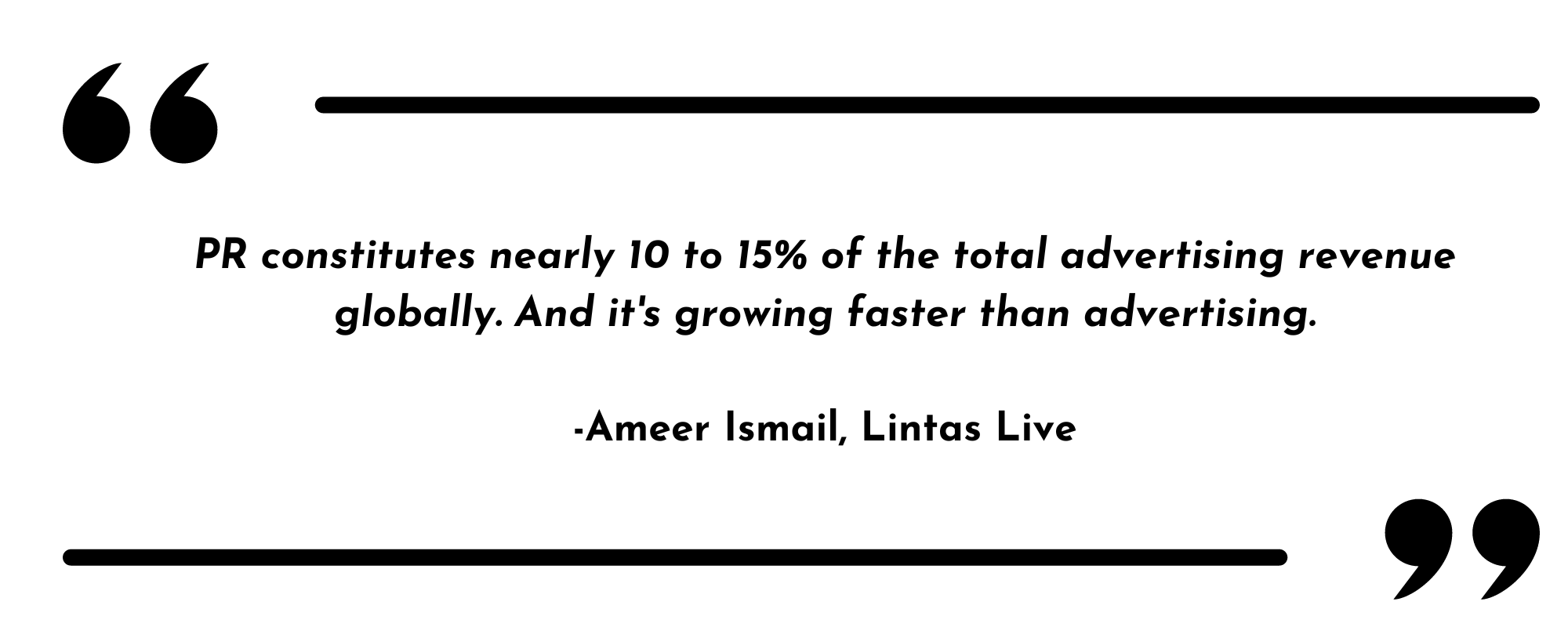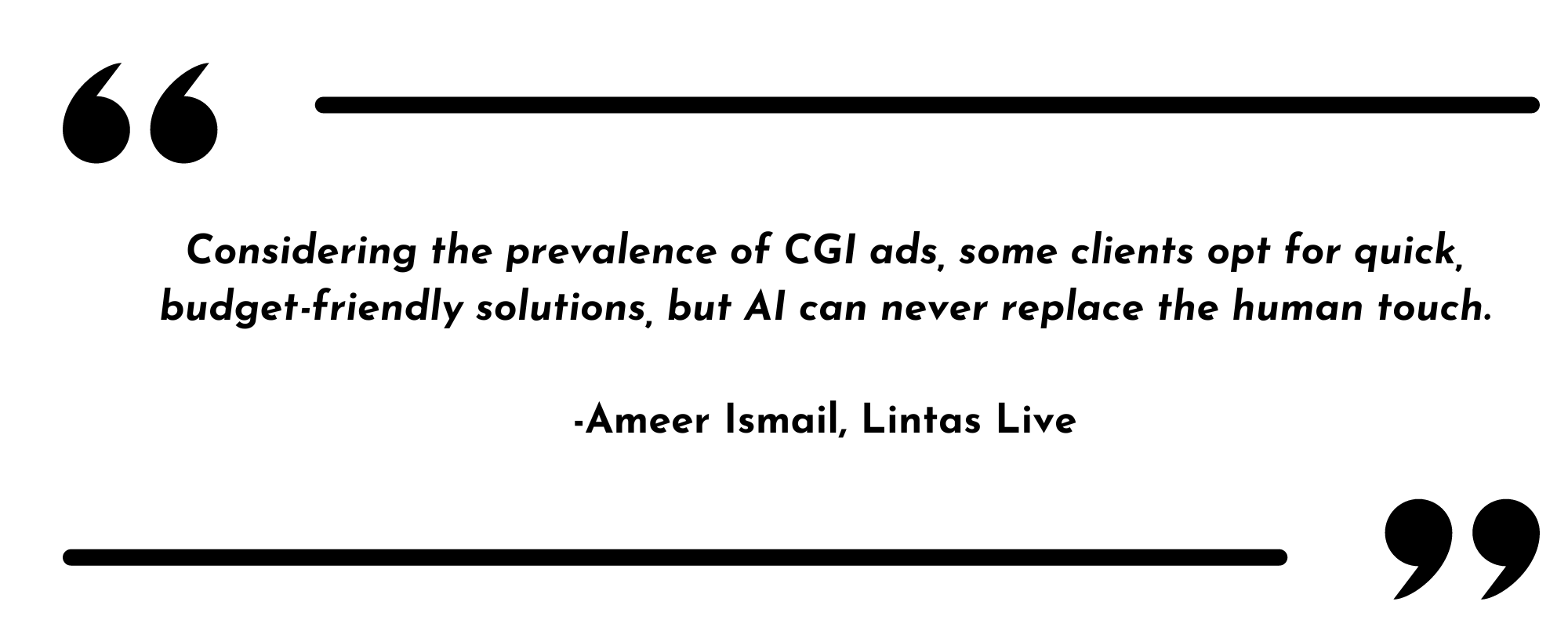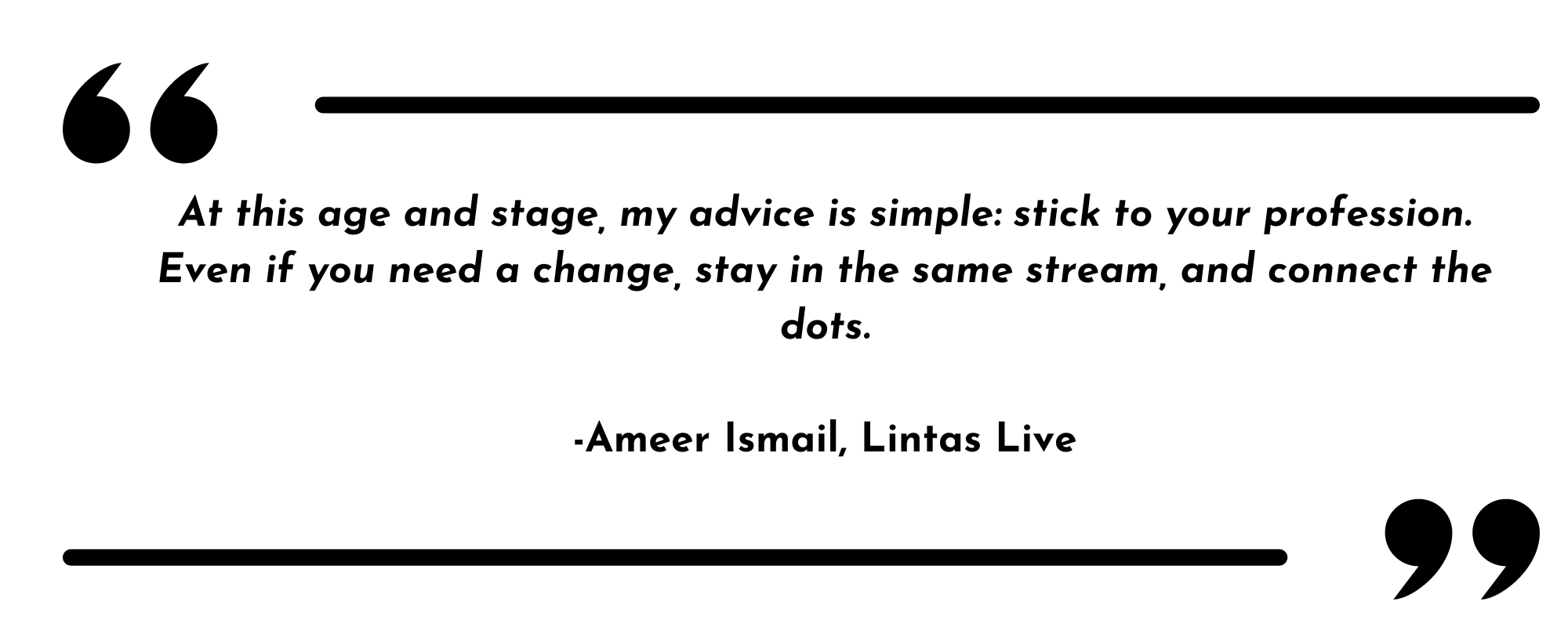Ameer Ismail’s Decades-Long PR Odyssey: Navigating a Dynamic Landscape
In the whirlwind world of PR, Ameer Ismail, President, Lintas Live, MullenLowe Lintas Group is the maestro orchestrating a symphony of success. Leading Lintas Live with visionary finesse, he’s transformed the game, turning campaigns into global resonances. Clients like Etihad and Starbucks are a testament to his strategic brilliance. Awards adorn his journey—CMO Asia, Reputation Today’s magazine’s list of top 10 PR leaders. Beyond boardrooms, he mentors and shapes the industry’s future. In the dynamic dance of communications, he’s not just rewriting the playbook; he’s setting the stage ablaze.
It was a pleasure to talk to him. Straight-forward, candid, and fair evaluations of the industry and business and great insights into the world of PR.
Your career trajectory within the group is quite dynamic. What principles have guided your career decisions and how has your leadership style evolved from Chief Growth Officer to President?
Firstly, a warm welcome to Lintas. I’m delighted to meet you. It’s been 27 years in the company and I’m not sure if it’s considered dynamic in this age of quick changes, but it’s certainly rare. Commitment, professionalism, and embracing core values—staying true to my profession and dedicated to the world of brands. These principles have been my anchor, keeping me in good stead throughout the journey.
I started as Associate Vice President when I joined the company in 1996, making me the youngest AVP in the company’s history. So, I’ve always held a senior role since day one, and there have been multiple other roles along the way. It’s been quite a trajectory!

Absolutely! What’s been the driving force behind your enduring commitment to this company over the years?
Lintas is an esteemed institution and continues to be one of the leading advertising and communications businesses. The roots of Lintas trace back over 75 years when it started as an advertising division of Unilever. The decision to diversify our offering stemmed from having a blue-chip client base primarily in advertising. Our management team led by former MD (and my boss at that time) Prem Mehta, envisioned offering clients newer and diversified services like PR. This strategic shift aimed to evolve the group’s offering and empower clients to build integrated campaigns. The PR brand (LINOpinion) came into the picture slightly before my time, around 1994. Back then, the PR landscape was small, both in terms of size and industry presence. Fast forward to today, and the scale of PR has grown tremendously, not just globally but also become significant in India.
You’ve pointed out PR has become quite huge now—could you share more, especially considering its substantial growth over the years?
To share perspective on this, globally, the largest PR agency generates over a billion dollars in revenue which is impressive, to say the least.
There are five major holding companies globally: Omnicom, Dentsu, WPP, Publicis, and IPG—we belong to IPG. These giants have multiple PR and advertising brands in markets all over the globe. The largest PR firm in IPG Weber Shandwick alone is also close to a billion dollars in revenue, surpassing some large global advertising networks. In essence, PR constitutes nearly 10 to 15% of the total advertising revenue globally. And it’s growing faster than advertising.
In your opinion, how has PR evolved over the years?
As things grow and evolve, they gain more significance in both business and visibility. Today, PR commands more respect than when I first started. I got into the business at an early stage as saw a chance for success and career growth then, and I still believe in the potential of PR. Now the game is specialist focus in PR with healthcare and pharma and technology focussed PR agencies that still have so much potential to grow.
Unlike advertising, PR campaigns don’t require large budgets and can create significant impact and there is the possibility of doing multi-market work or work for global brands while being based in India. For example, we manage clients in the Middle East, representing brands like Five Hospitality and Etihad Airways in the UAE. My vision for Lintas Live is to grow this space and create impactful global PR campaigns. We’ve taken many steps in this area and a few years ago we won a large global business – the Lagos Free Zone, in Nigeria. These are just a few examples of global brands and work.

How do you see the distinction between PR for Indian brands and that for international brands?
Our creative capability, execution skills, and teams are best in class. We excel in producing global work from India, backed by world-class talent, and are known for generating brilliant ideas that are effective for our clients. I have also had the privilege of working with Golin, a top-ten global PR agency, and was a part of the global management team where I experienced the best of global standards in PR. The challenge in India is in the difference between intuition and insight. In evolved markets clients rely on data and research that gives you clear and sharp insights, while in India as clients are hesitant to invest in research and data driven insights. New-age PR campaigns even utilize behavioural science and AI and its predictive capabilities. It’s a constantly evolving and exciting landscape.
Is the growth of PR in brands now comparable to marketing and advertising, with similar budget allocations, or does it still vary?
No, it’s not similar budgets for PR, but it is improving as clients see more value. We focus on a certain value of business that allows us to deploy the best resources and refuse business below a certain level.
AI is gaining prominence. How do you envision AI technology transforming the field of PR and brand communications in the near future?
I expect AI to transform our business significantly and it starts with the incredible ability to research back data and then the capabilities to generate content so fast. However, I don’t believe that it can replace human intervention like creative ideation and can never replace depth of insight and ideas ingrained in our years of experience. Considering the prevalence of CGI ads, some clients opt for quick, budget-friendly solutions, but AI can never replace the human touch so even if one uses AI generated content, we make sure it is aligned to the brand DNA by oversight from our creative team.

Can you share some examples of innovative PR campaigns or strategies that you have been involved in and their impact?
As an extension of its marquee campaign, H for Handwashing, Lifebuoy used the power of play this year and co-created ‘H for Handwashing Games’ with Imagimake to encourage children to adopt good hygiene practice. To help Lifebuoy take its social mission to the masses, we strategically leveraged owned, earned, and paid media to deliver the right message to the right audience. We drove thought leadership with HUL leadership, initiated regional media outreach, tapped into the social media platforms of media giants like The Times of India, Hindustan Times and Mad Over Marketing, and leveraged owned channels.
With this, we were successful in educating parents and caregivers across India about the importance of healthy hand hygiene and made them aware about how kids can learn about these essential hygiene habits through play. We also used different types of content including visual images, articles, and reels to further cater to the consumer’s content consumption preferences.
The campaign received significant traction among the traditional and new-age media platforms with media articles garnering a potential reach of over 150 million and reels garnering over 1.8 million views in less than a week.
Managing a global portfolio of clients requires a nuanced understanding of different markets. How do you tailor PR strategies to suit diverse cultural and regional contexts, especially in the case of international clients?
Traveling was the first thing I did when I was young, I took every opportunity to do this. I’m a big believer in exploring cultures as a best form of learning, and I push my team to do the same. Recently, a team member got the chance to visit Melbourne, courtesy of our long-standing client, Visit Victoria. Another colleague went on a media FAM to Singapore visit with one of our clients based there. These experiences give you a whole new outlook on life and culture, which is vital for understanding a global audience. You can’t get this knowledge solely from YouTube or Instagram reels.
Being recognized as one of the leading personalities in the PR industry comes with expectations. How do you stay ahead of the curve in terms of industry knowledge and innovation, and how do you encourage a culture of continuous learning within your team?
I recognize my strengths and long experience that have bought recognition, but I stay humble about my position in life. Incredibly proud of my achievements and am still enjoying my journey. I don’t measure success by others’ yardstick, there is always someone who seems to appear better, more successful. I believe you should be happy, positive, and committed to your own path in life.
Continuous learning is crucial—I listen/learn from colleagues every day and am involved with industry leaders, agency heads and some associations to further the development of the industry. Currently, I am involved with PRCAI to improve the win rate of Indian PR agencies in Cannes. There are learning sessions that aim to upgrade thinking for Cannes-worthy campaigns. I also encourage continuous learning with all teams and our HR team helps with an active learning program that provides training across all levels of the company.

Lastly, for those entering the PR field, what unique piece of advice or encouragement do you have to offer as they embark on their professional journey?
At this age and stage, my advice is simple: stick to your profession. Even if you need a change, stay in the same stream, and connect the dots. Many people get bored easily. I’ve spent 27 years in the same agency, despite offers and numerous opportunities to explore other paths. Even today when I can afford to do nothing, I choose to get up every morning, feel motivated, and come to work because I love what I do. So, my advice is stick with it, and stay committed. Over time, you will achieve success and professional growth.


